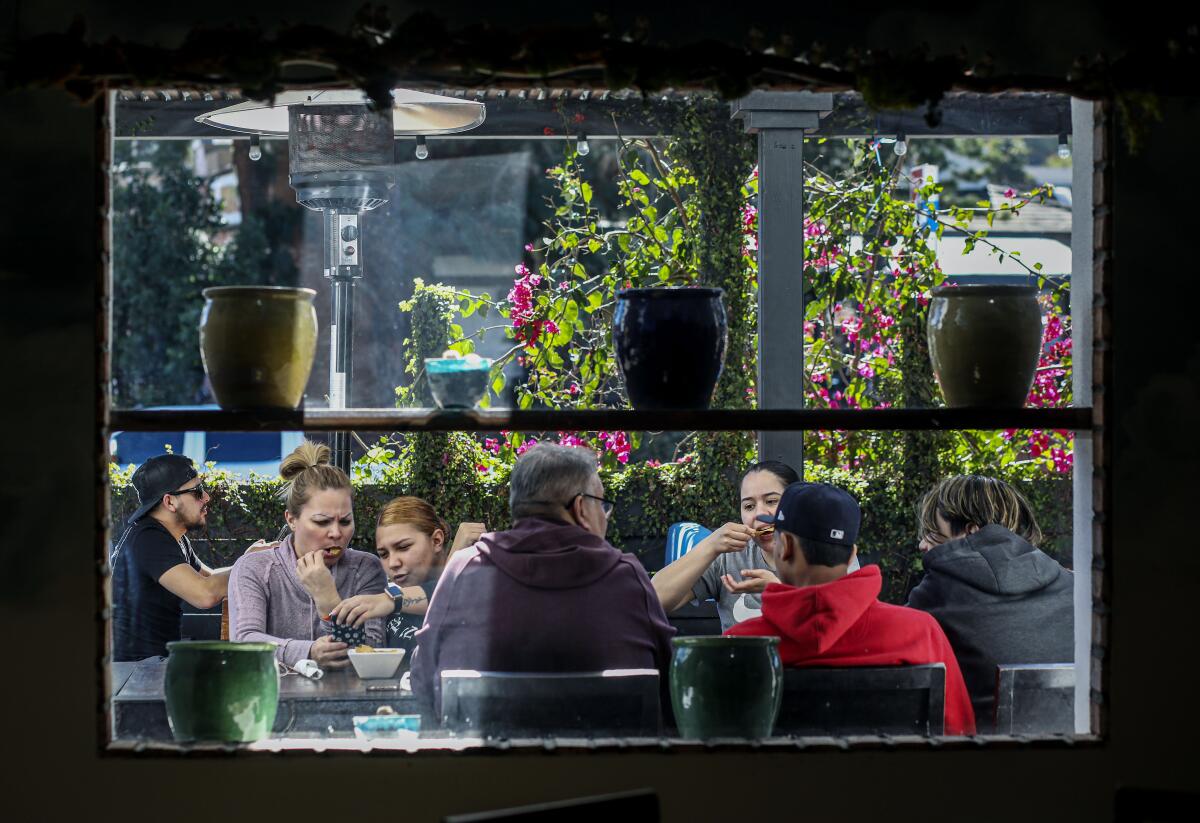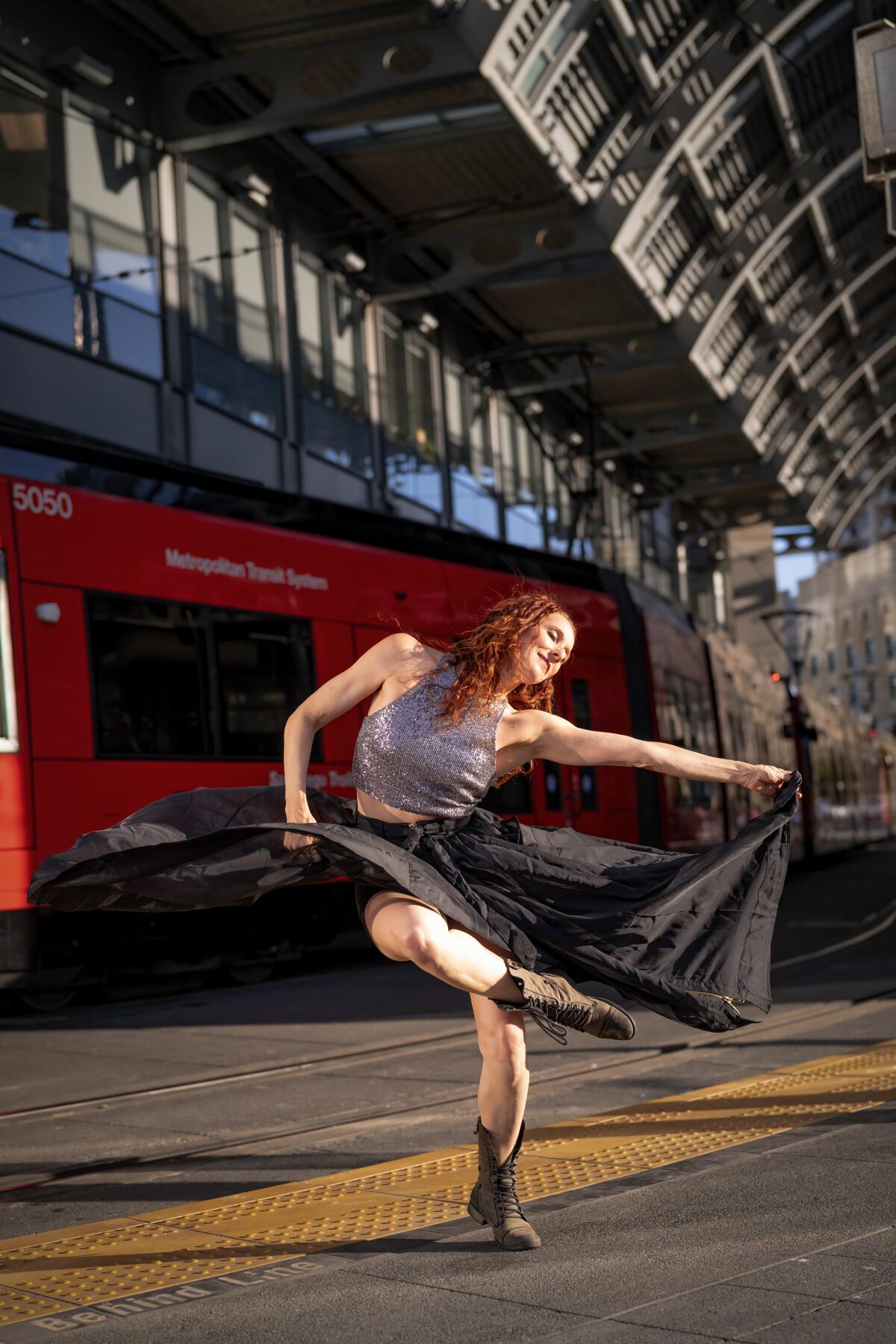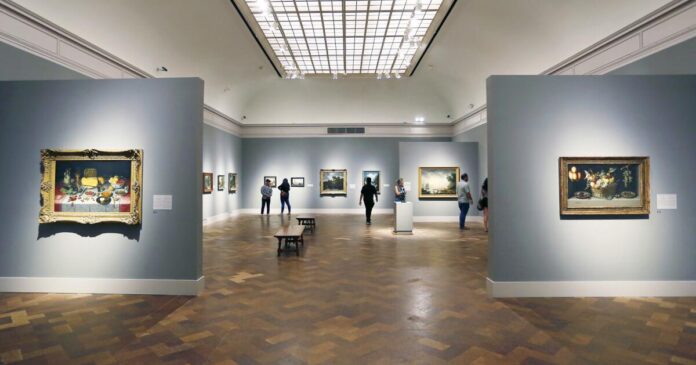A new report commissioned by the City of San Diego shows that San Diego County’s arts and culture nonprofit sector generated $1.37 billion in economic activity in 2022, almost half of which was tied to event-related spending by audiences.
These nonprofits helped sustain almost 20,000 jobs and paid about $321 million in taxes to local, state and federal governments in 2022, the report also said.
This first ever study of the economic impact of arts nonprofits in the region was done at a complicated time: as the COVID-19 pandemic was waning and cultural organizations were rebounding from its associated existential blows — but before the high inflation of 2023, when prices for utilities, rent, services, labor and goods all shot up.
A parallel study of the city of San Diego’s arts nonprofits found that their economic output in 2022 surpassed pre-pandemic levels, generating $1.1 billion in 2015 and almost $1.19 billion in 2022 — although changes to how the studies were done make it impossible to do an apples to apples comparison.
“While this is very good news that the nonprofit arts has, in fact, rebounded as well as it has, there are still profound structural issues with the way that the nonprofits arts and culture sector is funded, and its sustainability in the long run,” said Jonathon Glus, the executive director for arts and culture for the city of San Diego. “These are questions that we, as a community, are going to have to address.”
Both reports are part of Arts & Economic Prosperity 6 (AEP6), a national study of the economic impact of arts and culture nonprofits in 373 communities across the U.S. AEP is conducted periodically by Americans for the Arts, an arts research and advocacy nonprofit. The first of six studies was published in 1994.
The findings have implications for planning and policy making.
“We see this as really a step into a new phase of the way we think of the nonprofit arts and culture sector in our region. That this is really a regional industry,” Glus said. “Certainly the largest component is and will continue to be the city of San Diego, but we are part of a region and we acknowledge that and we need to be thinking about ourselves as a region from a policy perspective and economic development perspective.”
Seven cities, two districts
The county findings fill three key voids, Glus said.
- The report serves as a benchmark for future studies of the county’s arts nonprofits.
- It helps the county better understand its arts and culture sector. Other sectors — like tourism — benchmark at a county level. “We wanted to be able to mirror the way that many other studies are calculated,” he said.
- It helps the region evaluate itself in a broader context. “We’ve never been able to benchmark our county region in comparison to other urbanized counties,” he said. “This gives us a much more comprehensive tool to understand how we are growing the sector, what are strengths are in the sector.”
Nine local entities joined the county study: the cities of San Diego, Carlsbad, Coronado, Encinitas, Escondido, National City and Oceanside, along with the Balboa Park Cultural District and the Oceanside Cultural District.
In the city of San Diego, the spending and activities by arts nonprofits and their patrons contributed to 16,900 jobs, provided $878 million in personal income to residents and generated $275.7 million in tax revenue to local, state, and federal governments, the matching city report said.
What the numbers reveal
“The arts are not just food for the soul. They’re putting food on the table,” said Randy Cohen, the vice president of research at Americans for the Arts.
The county study demonstrates “locally as well as nationally that arts and culture is a critical economic driver of vibrant communities,” the 62-page report said. It also “sends a strong signal that, even in the aftermath of the COVID-19 pandemic and the resulting recession, the nonprofit arts and culture is a formidable industry.”
“When government funds the arts, when cities and counties support arts — an appropriate question to ask is, what’s the public’s ROI on that investment? Everybody will acknowledge cultural benefits,” Cohen said. “What this study shows us that there’s also economic benefits. … Arts funding is not a black hole. It gives back to the community.”
Cohen said the report shows this region is “one of the country’s cultural capitals,” on par with other artistic centers like Philadelphia, San Francisco and Houston.
The study also found that arts and culture events bring money from within and beyond the region. Other takeaways:
• The regional nonprofit arts and culture industry generates almost $638 million in event-related spending by audiences — who typically spend $35.57 per person, per event, outside the cost of admission.

Diners sit in outdoor seating at Karina’s Restaurant.
(Sandy Huffaker/SDUT)
These dollars go to everything from meals to parking to child care to treats on the town.
“It’s putting people on the streets and generating a lot of important commerce for local businesses,” Cohen said.
• The county is a magnet for arts lovers from other areas, who outspend locals almost two to one. About 11.2 percent of arts and culture attendees crossed county lines to attend an arts or cultural event and each person spent, on average, just shy of $70 on top of tickets.
• The survey found strong community support for the arts: almost 88 percent of people said the artistic or cultural activity or venue they were at was a source of neighborhood pride, and 85 percent said they’d feel sad if the activity or venue shut down.

A San Diego Dance Theater company member.
(Nelvin C. Cepeda/The San Diego Union-Tribune)
This study focused on nonprofits. Data from the city of San Diego and the San Diego Regional Policy and Innovation Center shows that creative industries in the region — including nonprofits and for-profit companies working in music, art dealers, digital media and other domains — generated $10.8 billion in 2022. That’s equivalent to 3.7 percent of the county’s gross regional product.
The sector “supported almost 170,000 total jobs across the county’s economy, including 82,467 direct creative economy jobs and nearly 87,000 indirect jobs,” the city said.



